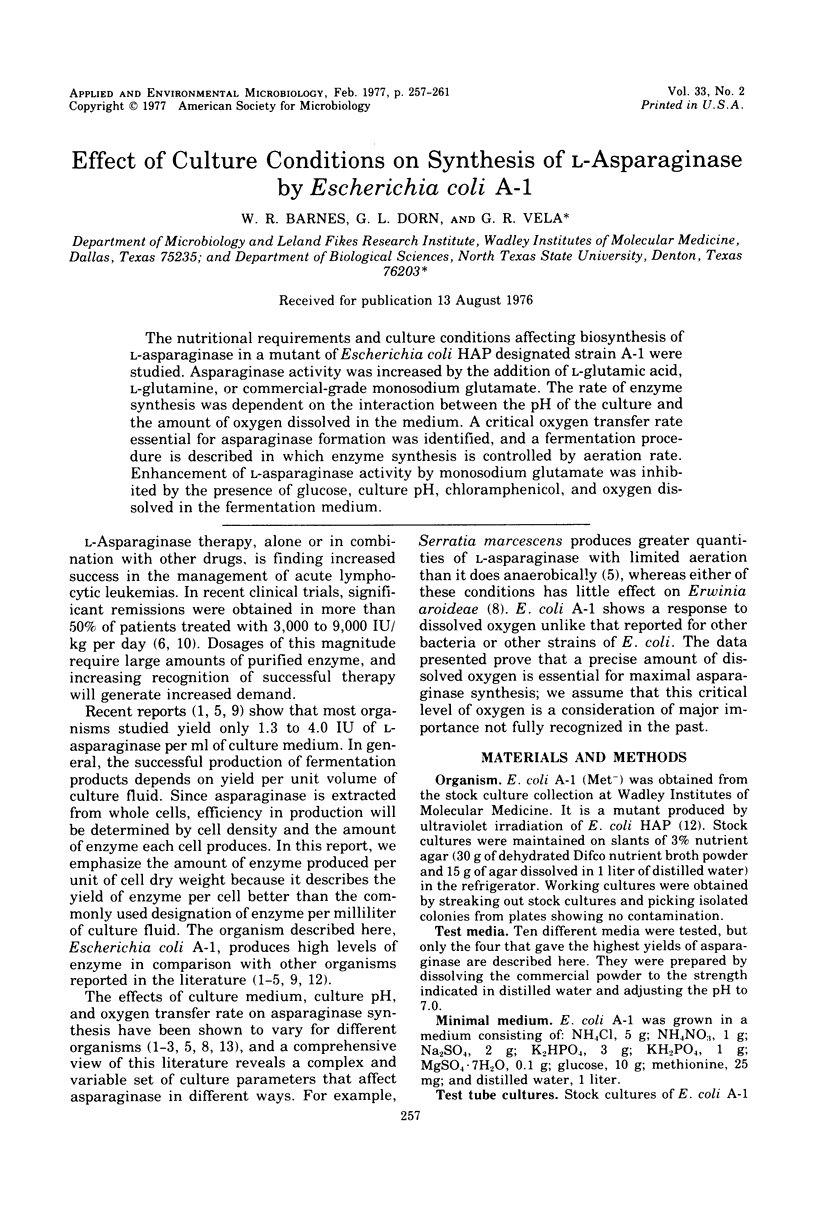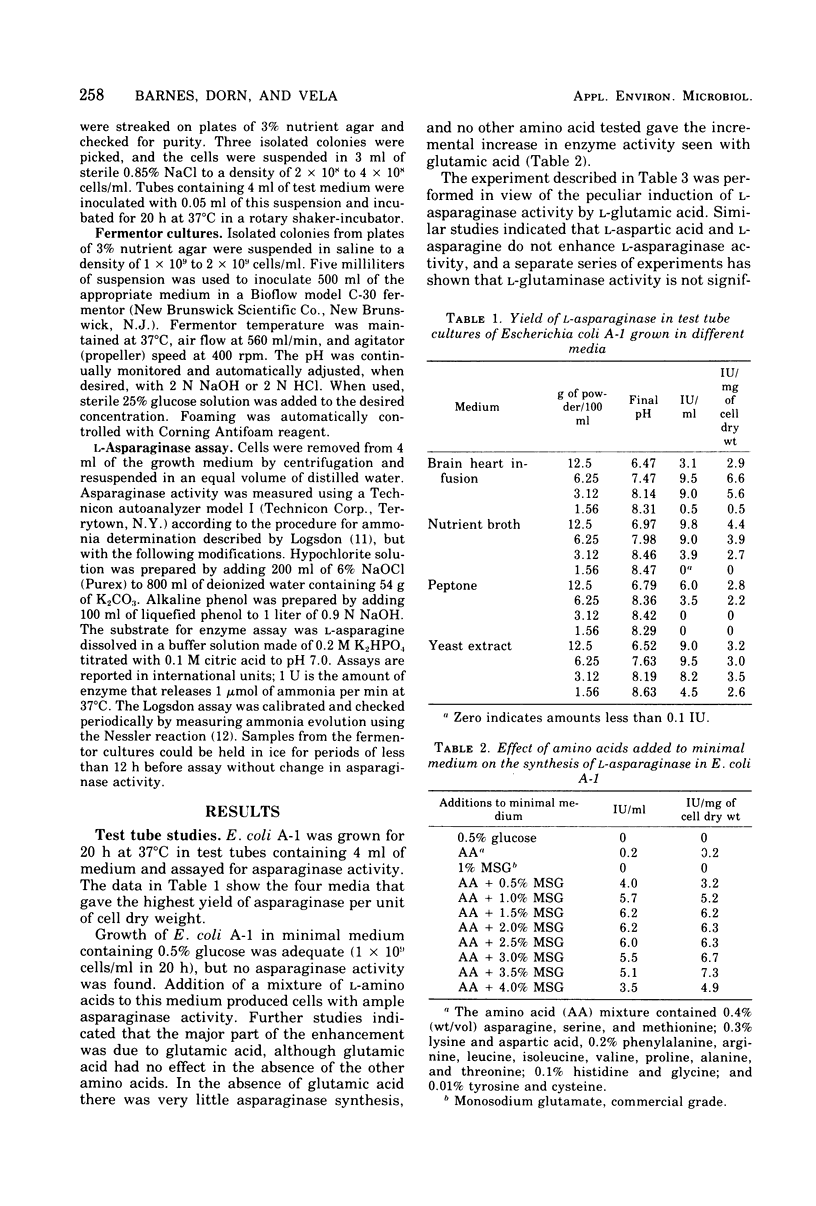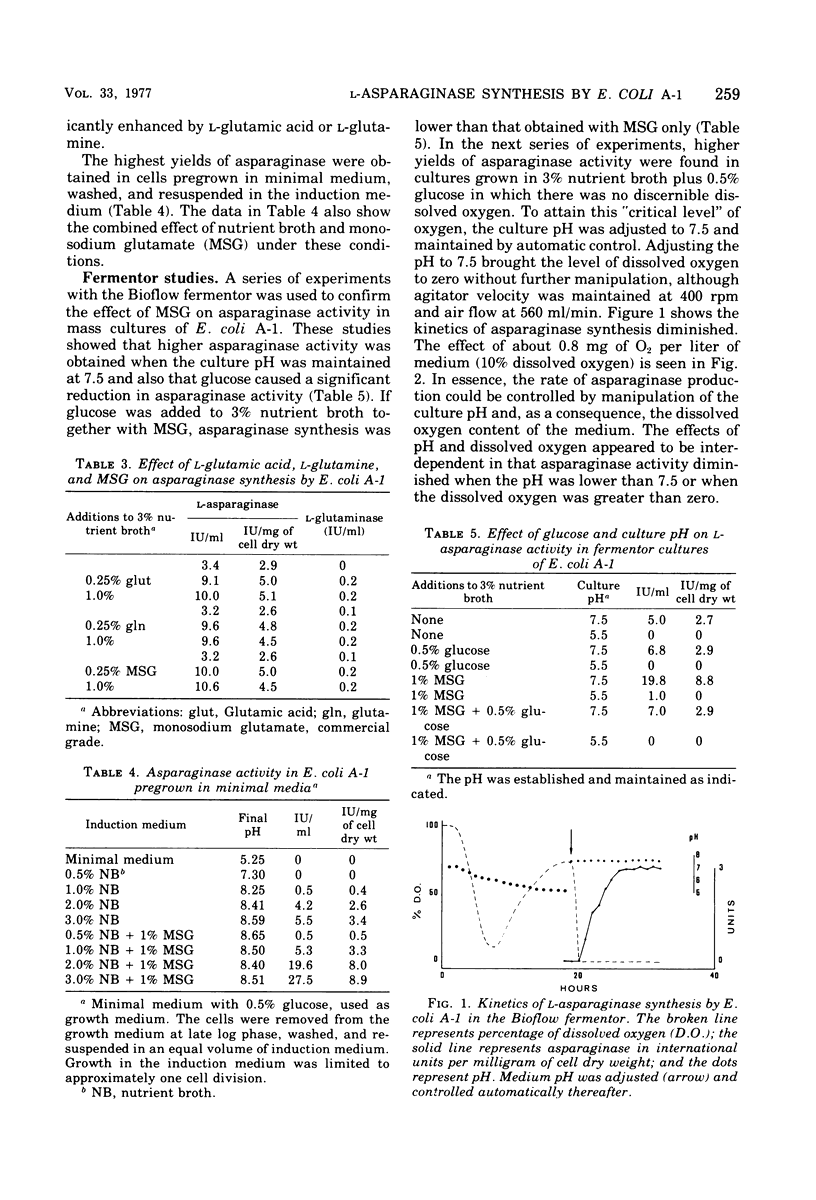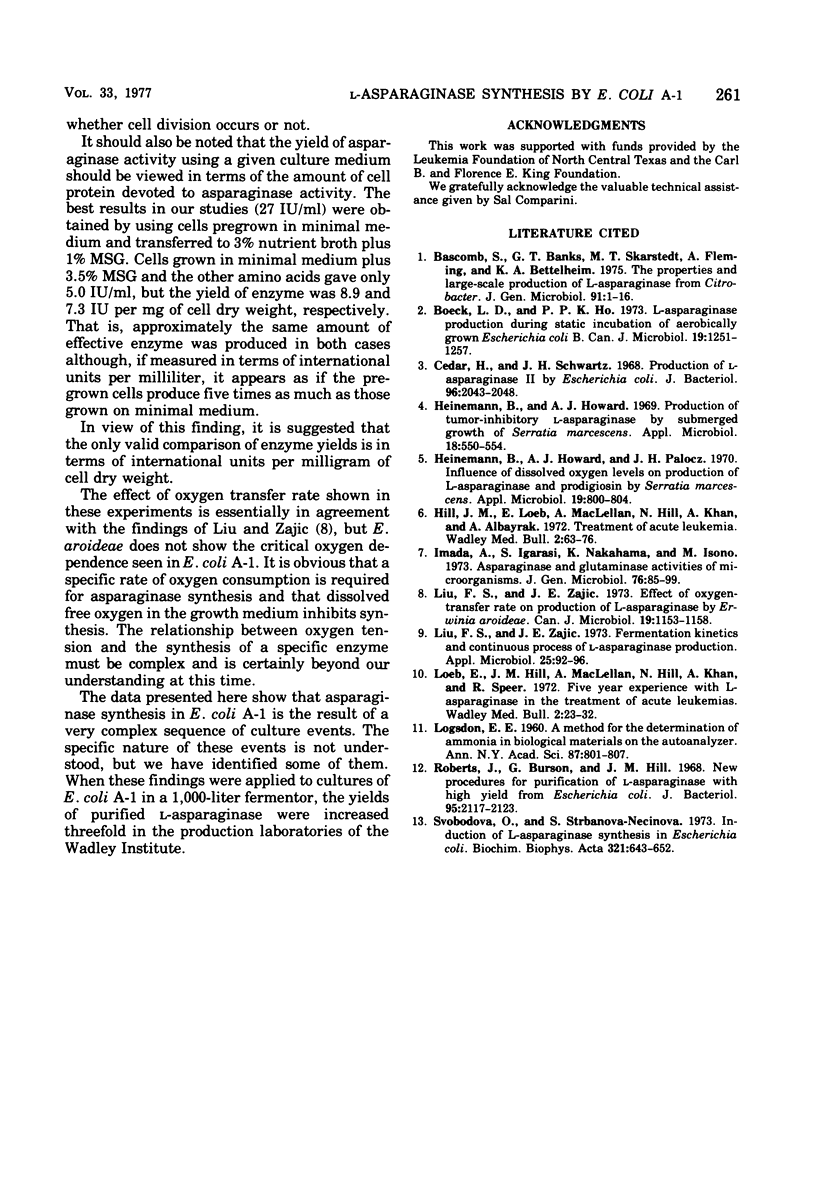Abstract
The nutritional requirements and culture conditions affecting biosynthesis of L-asparaginase in a mutant of Escherichia coli HAP designated strain A-1 were studied. Asparaginase activity was increased by the addition of L-glutamic acid, L-glutamine, or commercial-grade monosodium glutamate. The rate of enzyme synthesis was dependent on the interaction between the pH of the culture and the amount of oxygen dissolved in the medium. A critical oxygen transfer rate essential for asparaginase formation was identified, and a fermentation procedure is described in which enzyme synthesis is controlled by aeration rate. Enhancement of L-asparaginase activity by monosodium glutamate was inhibited by the presence of glucose, culture pH, chloramphenicol, and oxygen dissolved in the fermentation medium.
Full text
PDF




Selected References
These references are in PubMed. This may not be the complete list of references from this article.
- Bascomb S., Banks G. T., Skarstedt M. T., Fleming A., Bettelheim K. A. The properties and large-scale production of L-asparaginase from citrobacter. J Gen Microbiol. 1975 Nov;91(1):1–16. doi: 10.1099/00221287-91-1-1. [DOI] [PubMed] [Google Scholar]
- Boeck L. D., Ho P. P. L-asparaginase production during static incubation of aerobically grown Escherichia coli B. Can J Microbiol. 1973 Oct;19(10):1251–1257. doi: 10.1139/m73-202. [DOI] [PubMed] [Google Scholar]
- Cedar H., Schwartz J. H. Production of L-asparaginase II by Escherichia coli. J Bacteriol. 1968 Dec;96(6):2043–2048. doi: 10.1128/jb.96.6.2043-2048.1968. [DOI] [PMC free article] [PubMed] [Google Scholar]
- Heinemann B., Howard A. J., Palocz H. J. Influence of dissolved oxygen levels on production of L-asparaginase and prodigiosin by Serratia marcescens. Appl Microbiol. 1970 May;19(5):800–804. doi: 10.1128/am.19.5.800-804.1970. [DOI] [PMC free article] [PubMed] [Google Scholar]
- Heinemann B., Howard A. J. Production of tumor-inhibitory L-asparaginase by submerged growth of Serratia marcescens. Appl Microbiol. 1969 Oct;18(4):550–554. doi: 10.1128/am.18.4.550-554.1969. [DOI] [PMC free article] [PubMed] [Google Scholar]
- Imada A., Igarasi S., Nakahama K., Isono M. Asparaginase and glutaminase activities of micro-organisms. J Gen Microbiol. 1973 May;76(1):85–99. doi: 10.1099/00221287-76-1-85. [DOI] [PubMed] [Google Scholar]
- LOGSDON E. E. A method for the determination of ammonia in biological materials on the autoanalyzer. Ann N Y Acad Sci. 1960 Jul 22;87:801–807. doi: 10.1111/j.1749-6632.1960.tb23237.x. [DOI] [PubMed] [Google Scholar]
- Liu F. S., Zajic J. E. Effect of oxygen-transfer rate on production of L-asparaginase by Erwinia aroideae. Can J Microbiol. 1973 Sep;19(9):1153–1158. doi: 10.1139/m73-183. [DOI] [PubMed] [Google Scholar]
- Liu F. S., Zajic J. E. Fermentation kinetics and continuous process of L-asparaginase production. Appl Microbiol. 1973 Jan;25(1):92–96. doi: 10.1128/am.25.1.92-96.1973. [DOI] [PMC free article] [PubMed] [Google Scholar]
- Roberts J., Burson G., Hill J. M. New procedures for purification of L-asparaginase with high yield from Escherichia coli. J Bacteriol. 1968 Jun;95(6):2117–2123. doi: 10.1128/jb.95.6.2117-2123.1968. [DOI] [PMC free article] [PubMed] [Google Scholar]
- Svobodová O., Strbánová-Necinová S. Induction of L-asparaginase synthesis in Escherichia coli. Biochim Biophys Acta. 1973 Oct 10;321(2):643–652. doi: 10.1016/0005-2744(73)90208-8. [DOI] [PubMed] [Google Scholar]


